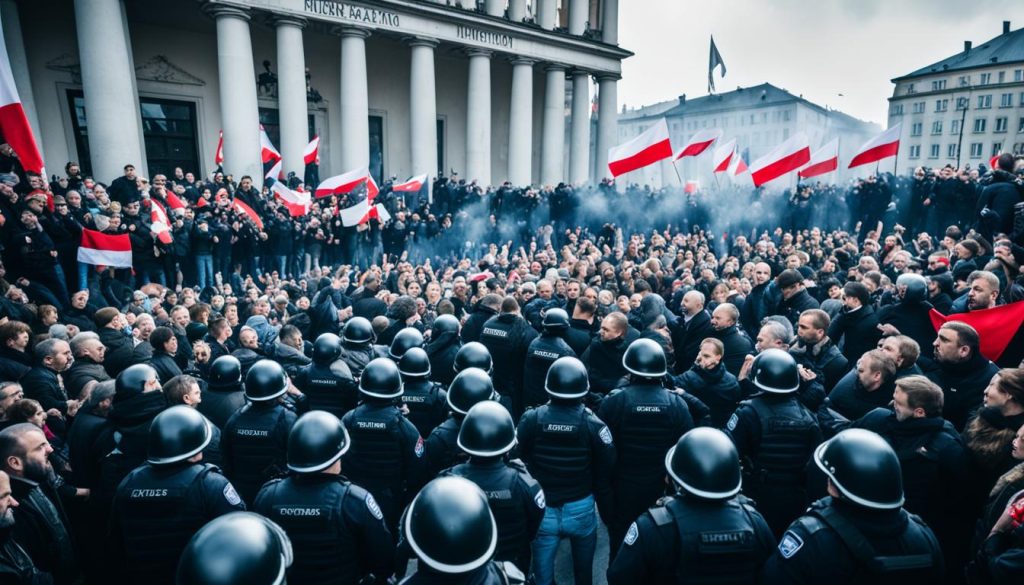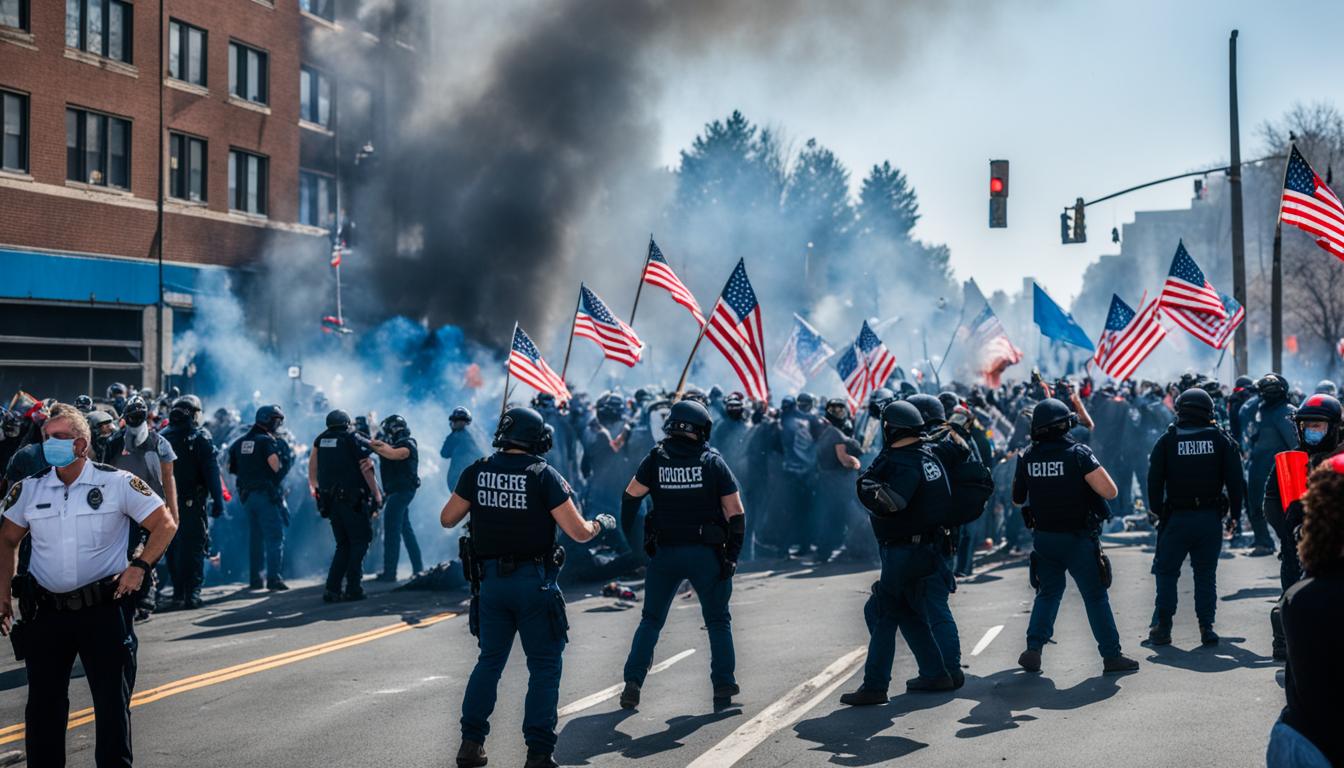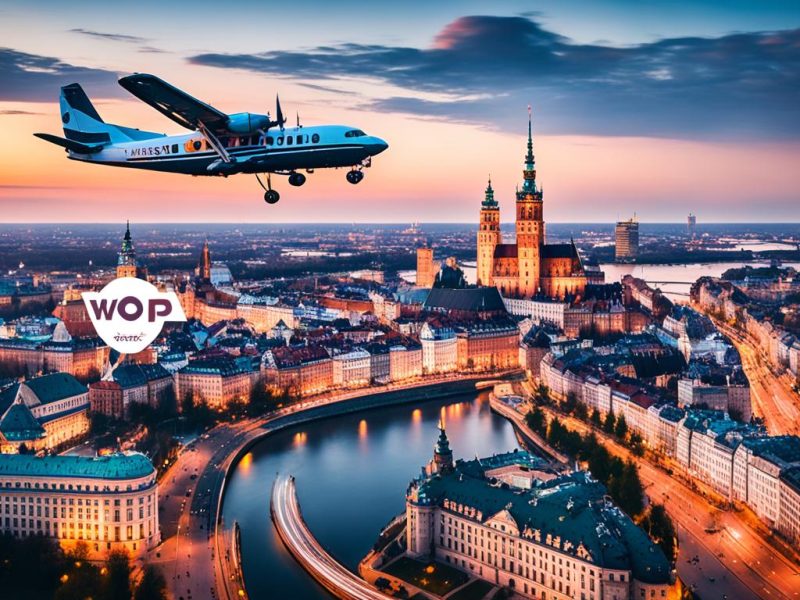Poland is currently experiencing a wave of civil unrest. This shows how the country is struggling with its democracy. People from all walks of life are protesting against the government’s actions. This has caught the attention of both Polish people and others worldwide.
The protests are a sign of public dissatisfaction. They show how deep the unrest goes in Polish society. Many call for changes and want to see democracy respected once more.
Key Takeaways
- Escalating tensions reflect an undercurrent of discontent with political and economic policies in Poland.
- Public mobilisation highlights the democratic spirit and civic engagement of the Polish citizenry.
- The scale of the protests indicates a significant moment of societal challenge to the status quo.
- Potential repercussions of the current civil unrest in Poland could reshape national policy and governance.
- The situation underscores the broader debate over the rule of law and civil liberties within the European Union.
Roots of Civic Unrest: Understanding the Causes of the Poland Protests
In Poland, intense protests against the government are unfolding. They are driven by several factors. These include changes in laws, economic difficulties, and government actions. All these elements bring a deep dissatisfaction among the people.
Legislative Changes and Judicial Reforms
Poland’s judicial reforms have stirred much unrest. They suggest a loss of judicial independence. Citizens and the world worry about Poland’s democracy because of these reforms.
Economic Factors and Social Inequality
Widening gaps between the rich and poor have made people in Poland unhappy. Issues like job security and high living costs add to this. People feel the government isn’t doing enough to help.
Governmental Policies and Public Reaction
Many do not agree with the government’s recent policies. They feel these policies serve a few, not the whole country. This has led people from various age groups to protest, creating a nationwide movement.

This table cleanly shows why protests in Poland continue. It highlights different causes of discontent. This shows how complex and multi-layered the situation is.
| Aspect | Issues | Public Sentiment |
|---|---|---|
| Judiciary Reform | Negotiation of judicial independence | Dismay and apprehension surrounding democratic principles |
| Economic Challenges | Social inequality, job instability, increased cost of living | Growing disenchantment amid financial strain |
| Government Policies | Perceived prioritisation of political goals over public welfare | Widespread disillusionment and call for action |
Poland’s society is closely examining and re-evaluating itself right now. Combining these issues shows how committed people are. They want a country that agrees with their ideas of democracy, justice, and fairness in the economy.
Poland Protests: A Timeline of Key Events and Turnout
The Poland protest timeline is key to grasping the rise in civil unrest timeline over recent years. It shows important moments that grew from small protests to large demonstrations. This maps major protests in Poland and their significant outcomes.
| Date | Location | Event | Turnout |
|---|---|---|---|
| 2020-10-22 | Nationwide | Constitutional Tribunal ruling on abortion | 100,000+ |
| 2021-03-08 | Warsaw | Women’s Strike International Women’s Day march | 50,000+ |
| 2021-07-20 | Across major cities | Media without Choice – protests against media tax | Varied – several thousands in major cities |
| 2022-02-12 | Warsaw | Freedom of Speech rally | 15,000+ |
This timeline shows how protests have become more frequent. It also shows how well-organised these events have become. The reaction to abortion law changes is a key moment in the Poland protest timeline. It marked a turning point that gained worldwide attention. This moved the issue from a local concern to the international stage.
Conclusion
The protests in Poland have sparked a major shift in the nation’s history. They show that people’s actions can greatly change policymaking and public talks in Poland. The unrest has even made Poland look different to the rest of Europe. These protests highlight the public’s fight for democracy and their devotion to European Union ideals.
The way people take part in politics in Poland is changing. Public actions are now more important, hinting at a future where the government listens more to its people. This could mean Poland moves towards a government that is clear, accountable, and listens to its citizens.
The protests mean more than just their initial causes. They show the power of society to shape its future through unity. When discussing Poland’s future, it’s key to see how these protests will redefine what it means to be a responsible citizen. These movements prove that active civic involvement is key to a strong democracy, in Poland and everywhere.
FAQ
What are the underlying causes for civil unrest in Poland?
Poland is facing unrest due to several reasons. New laws are seen as hurting court independence. Economic issues and controversial policies also trigger protests.
How have the Polish government’s judicial reforms impacted the democratic process?
Judicial changes in Poland have sparked debates. Many see these reforms as a threat to democracy. They fear it shifts Poland towards authoritarianism.
Are economic factors contributing to the Polish protests?
Yes, the economy plays a big role in the protests. Issues like social inequality, job fears, and rising living costs are causing public anger.
What has been the public reaction to government policies in Poland?
People in Poland are largely unhappy with the government. Different groups, including students, are protesting. They think the government ignores the nation’s needs.
Can you provide a timeline of the key events in the Poland protests?
A full timeline is too long for here. But, protests grew from small to big very quickly. Important events were the judicial backlash and major city rallies.
What are the implications of the protests for the future of Poland?
The protests could change a lot for Poland. They might lead to new policies and change Poland’s role in Europe. People are more engaged, which could reshape actions.
How might these protests affect Poland’s position within the European Union?
The protests might complicate Poland’s EU relationship. Issues raised are central to EU values. This could mean more EU oversight and possible impacts for Poland.
What is the role of anti-government demonstrations in shaping Poland’s political climate?
Protests are key in challenging Poland’s leaders. They’re a strong way for the public to express dissent. This could lead to changes in laws and governance.
In what ways has social inequality contributed to the economic discontent in Poland?
Social inequality has fueled discontent. Differences in incomes and opportunities cause frustration. This sense of unfairness drives many to protest.



